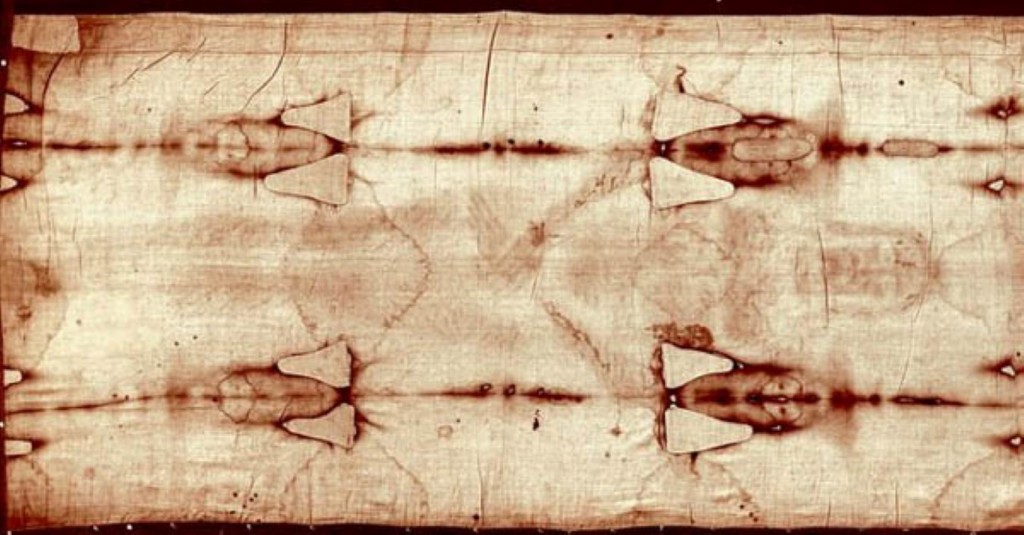The Shroud of Turin
The Shroud of Turin is a length of linen cloth bearing the image of a man who appears to have suffered physical trauma in a manner consistent with crucifixion. There is no consensus yet on exactly how the image was created, and it is believed by some to be the burial shroud of Jesus of Nazareth, despite radiocarbon dating placing its origins in the Medieval period. The image is much clearer in black-and-white negative than in its natural sepia color. The negative image was first observed in 1898, on the reverse photographic plate of amateur photographer Secondo Pia, who was allowed to photograph it while it was being exhibited in the Turin Cathedral.
The first certain evidences on the Shroud of Turin date back to the half of the XIV th century when the french knight Geoffroy de Charny laid the Shroud in the church he had built in 1353 in his Lirey fee in the Champagne region.
Where did the Shroud come from? Historians have many records at their disposal about epochs previous to XIV th century but to reconstruct a clear documented organic path is really hard. In many centres of Asia Minor and later on in Constantinople there are accounts of the presence of the Shroud that wrapped the body of Jesus in Jerusalem. But just because of this lack of certain data a lot of prudence is needed in formulating theories and easy or imaginative theories that lack scientific confirmation can not be encouraged. Marguerite de Charny, who was the last Geoffroy descendant, took the Shroud from the Lirey church (1418) due to the sharpening of the Hundred Years War to bring it with her during her wandering in Europe and arrived at the court of the Savoy dukes, whom both her father and her second husband Umbert de La Roche were linked to.
In 1453 the Shroud became a House of Savoy property within a series of juridical acts between the duke Ludovique and Margaret. From 1471, Blessed Amadeus IX, Ludovique’s son, started embellishing and enlarging the chapel of Chambéry castle, the capital of the Dukedom, to house the Shroud in the future. The Shroud, after having been kept in the church of the Franciscans, was housed in the Sainte-Chapelle du Saint-Suaire once and for all. In 1506 the Savoy asked and obtained from Pope Giulio II the acknowledgement of a liturgic celebration of their own and the date they chose was may, 4th. On december 4th, 1532 a fire broke out in the Sainte-Chapelle seriously damaging the Shroud later repaired by the Poor Clares in 1534. In 1578 Duke Emanuel Philibert definitely transferred the Shroud in Turin in order to strengthen the project of the transfer of the capital of the Savoy states along the Po river. The Carlo Borromeo pilgrimage, the Milan archbishop, to revere the Shroud gave the per-fect occasion to its transfer and, on september 14th that same year, it arrived heralded by a gun salute from the local artillery in a solemn atmosphere.
From that moment on the Shroud remained in Turin where, in the following centuries, it was on public and private exposition many times. Of course, the religiousness of Piedmont (and not of Piedmont only) was deeply influenced by a so important presence. Many paintings, that can be found in the capital even today and in many countries formerly Savoy territories, are a surviving evidence of this. The big and solemn expositions, very common in the two baroque centuries, underlined this public devotional aspect.
The special exhibition of the Holy Shroud is closing on the 24th of June – more information on http://www.sindone.org/
For further informations watch this video in english: it might be the best film ever produced on the Shroud of Turin!
